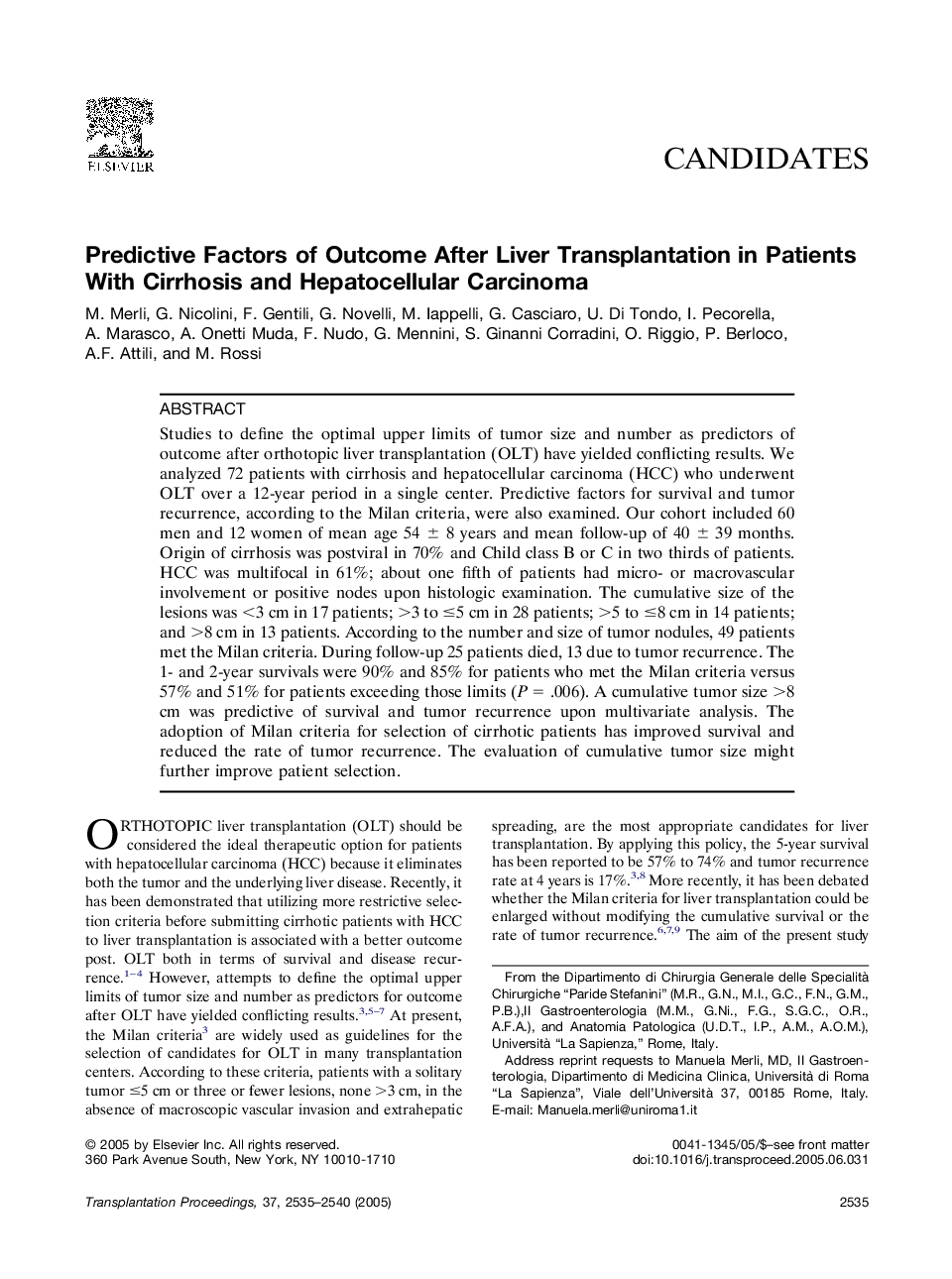| Article ID | Journal | Published Year | Pages | File Type |
|---|---|---|---|---|
| 4263642 | Transplantation Proceedings | 2005 | 6 Pages |
Abstract
Studies to define the optimal upper limits of tumor size and number as predictors of outcome after orthotopic liver transplantation (OLT) have yielded conflicting results. We analyzed 72 patients with cirrhosis and hepatocellular carcinoma (HCC) who underwent OLT over a 12-year period in a single center. Predictive factors for survival and tumor recurrence, according to the Milan criteria, were also examined. Our cohort included 60 men and 12 women of mean age 54 ± 8 years and mean follow-up of 40 ± 39 months. Origin of cirrhosis was postviral in 70% and Child class B or C in two thirds of patients. HCC was multifocal in 61%; about one fifth of patients had micro- or macrovascular involvement or positive nodes upon histologic examination. The cumulative size of the lesions was <3 cm in 17 patients; >3 to â¤5 cm in 28 patients; >5 to â¤8 cm in 14 patients; and >8 cm in 13 patients. According to the number and size of tumor nodules, 49 patients met the Milan criteria. During follow-up 25 patients died, 13 due to tumor recurrence. The 1- and 2-year survivals were 90% and 85% for patients who met the Milan criteria versus 57% and 51% for patients exceeding those limits (P = .006). A cumulative tumor size >8 cm was predictive of survival and tumor recurrence upon multivariate analysis. The adoption of Milan criteria for selection of cirrhotic patients has improved survival and reduced the rate of tumor recurrence. The evaluation of cumulative tumor size might further improve patient selection.
Related Topics
Health Sciences
Medicine and Dentistry
Surgery
Authors
M. Merli, G. Nicolini, F. Gentili, G. Novelli, M. Iappelli, G. Casciaro, U. Di Tondo, I. Pecorella, A. Marasco, A. Onetti Muda, F. Nudo, G. Mennini, S. Ginanni Corradini, O. Riggio, P. Berloco, A.F. Attili, M. Rossi,
